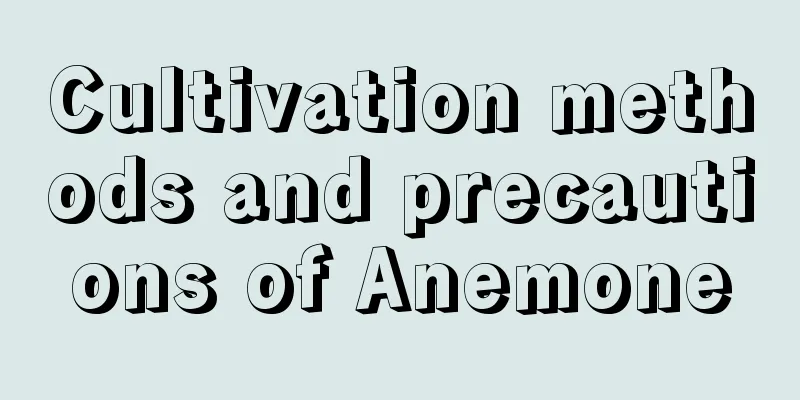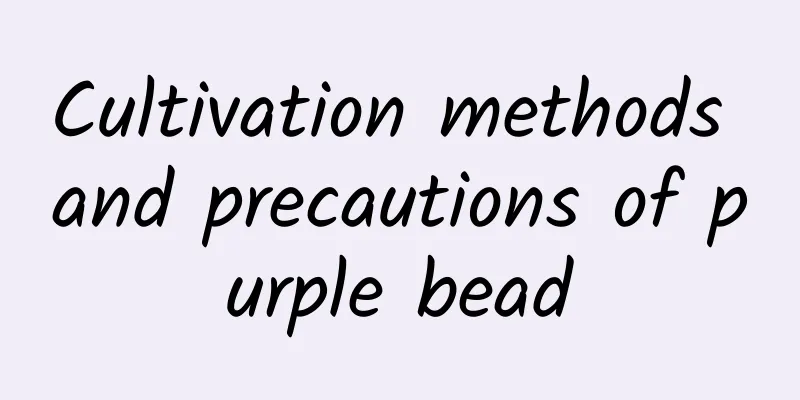Cultivation methods and precautions of Anemone

How to grow anemonePot soil selectionTo grow anemones, you can choose a mixed potting soil, mix garden soil, leaf mold and wood ash in a certain proportion, and add some base fertilizer, and require good drainage. Light and temperatureGrowing anemones requires two conditions: coolness and sufficient light. Anemone can withstand cold, but avoid high temperature. The suitable temperature for its growth is between 15℃ and 35℃. The temperature in winter needs to be no lower than 10℃. It can survive the winter safely and can be placed in a sunny place indoors. If conditions permit, it can be placed in a greenhouse for maintenance. Watering and fertilizingWhen growing anemones, you need to keep the soil moist, but be careful when watering so that the soil in the pot is not too wet to avoid root rot. There is less water in winter, so watering can be reduced. In rainy seasons, anemones need to be placed in a dry place for maintenance, protected from rain, and watering should be stopped. Generally, a thin layer of fertilizer water should be applied once every half a month. During the flowering period, in order to promote the formation of flower buds, it can be applied once a week. Reproduction methodThe main methods of reproduction of Anemone are sowing and dividing bulbs. Sowing is in autumn and the seeds are sown as soon as they are collected. Bulb division propagation mainly refers to the division and planting of Anemone bulbs. Anemone cultivation precautionsPests and diseasesAnemones may have diseases and pests, the main diseases are rot, damping-off, gray mold, powdery mildew, etc. The damage is relatively serious and requires timely prevention and control. The pests are mainly aphids and cutworms, which can be sprayed with common insecticides. Seed CollectionAnemone can be sown, and the seeds are usually sown as soon as they are collected. The seeds must be harvested in time, otherwise they will be blown away by the wind. The harvested seeds should be placed in a ventilated and dry place for maintenance. |
<<: Cultivation methods and precautions of yellow bell flower
>>: Cultivation methods and precautions of Jade Leaf Golden Flower
Recommend
How to eat Gorgon Fruit and Precautions
How to eat Here are two simple and easy ways to e...
How to grow peony
1. Suitable soil It actually has a very strong ab...
How to water peppers on the balcony
How to water peppers Do not water too much during...
Should I put my baby's breath in water or dry it?
1. Water or dry storage When placing baby's b...
When is the best time to apply fertilizer to soybeans?
Soybean topdressing time Soybean's demand for...
What kind of tree is best to plant in front of your house?
The trees planted in front of the door should be ...
Illustration of asparagus fern pruning method
Asparagus fern is known as the "elegant bamb...
Common diseases and prevention methods of ground rooting
Common diseases of ground rooting: Botrytis ciner...
How to grow jasmine seedlings purchased online
1. Prune old roots After buying the jasmine seedl...
Is the Tower of Ash poisonous? Can it be kept at home?
Is the Tower of Ash poisonous? Because when the r...
Can coconut trees be planted in Guangxi?
Can coconut trees be grown in Guangxi? Coconut tr...
The fastest way to root Epiphyllum cuttings
Epiphyllum cutting time It is better to propagate...
Can pesticide spraying and fertilizing be done at the same time?
1. Can it be done at the same time? If you want t...
Can lilies be placed in the bedroom?
1. Can it be placed in the bedroom? It cannot be ...
August 8, 2018, I give you 8 kinds of flowers, wishing you have money to spend freely!
Rose Flower language: Waiting for hope and happin...









